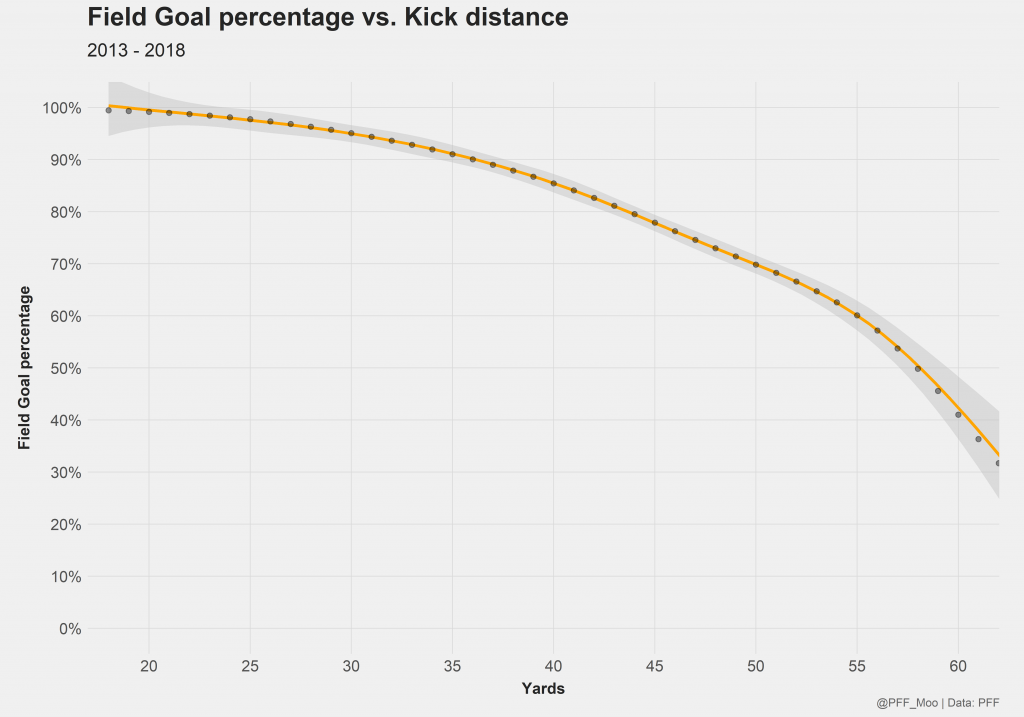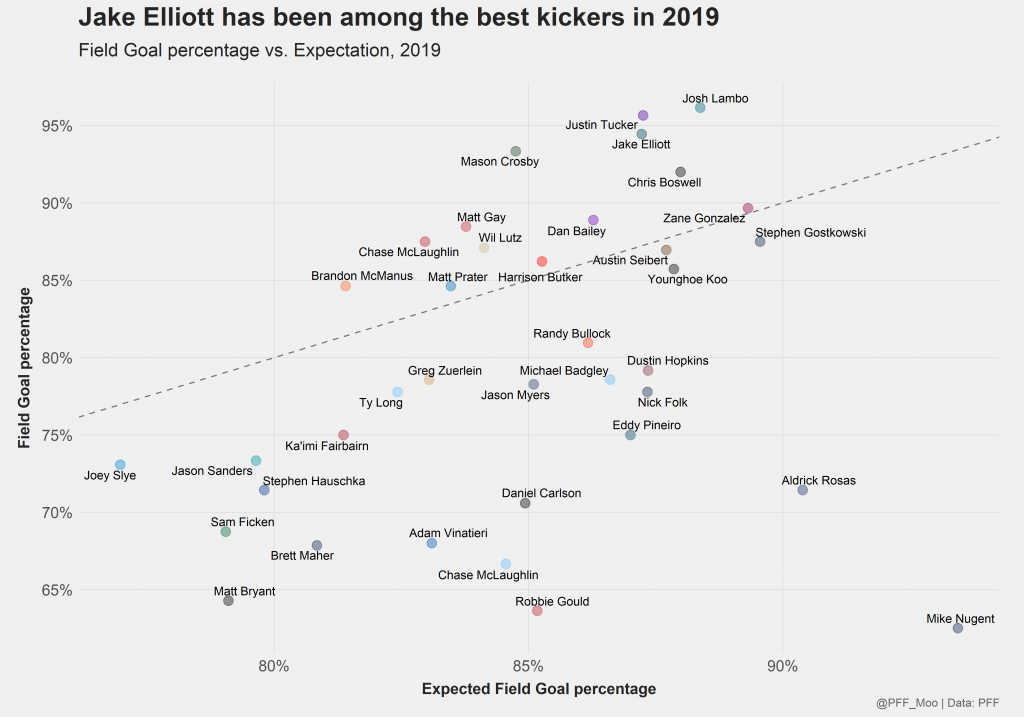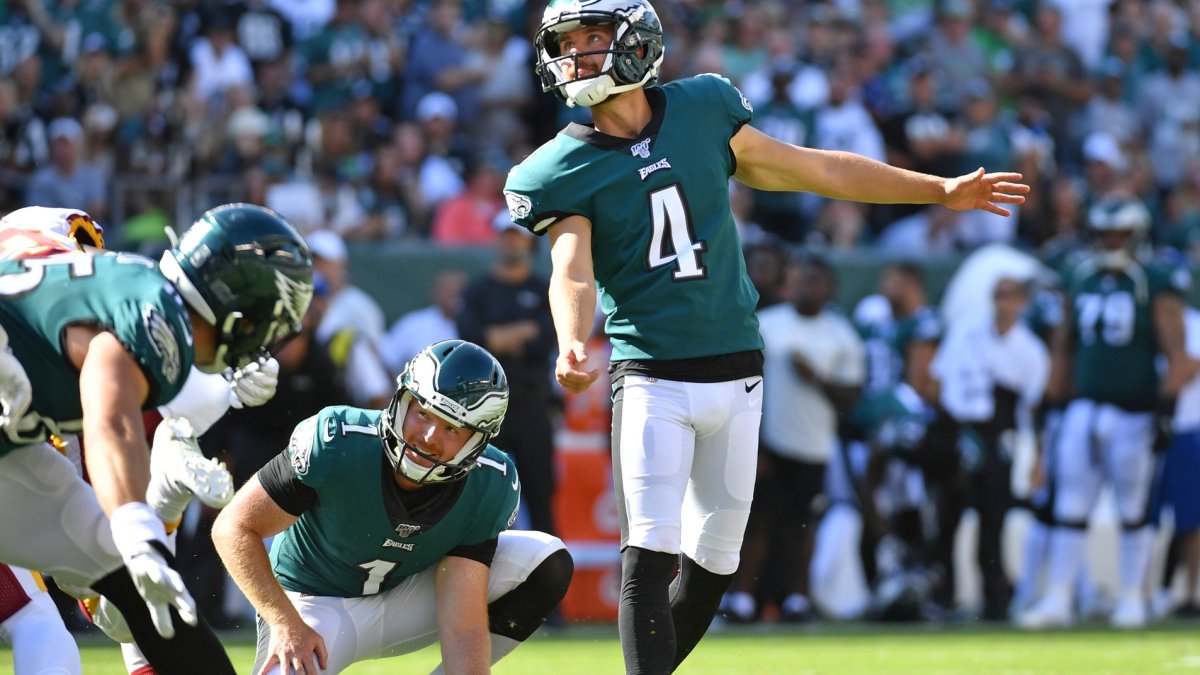After hitting on 14 field goals in a row to start this season, Jake Elliott earned himself a well-deserved contract extension that guaranteed him $10.45 million and comes with an average salary of $4.36M per year. Both figures are the third-highest in the league, behind only Robbie Gould and Justin Tucker. Given that the league-wide field goal percentage is down by roughly 5% this season and Elliott led the kickers that are bucking this trend as the only kicker without a miss at the point of signing, it seems like a safe bet to pay him 2.5% of the cap to keep him around in Philadelphia for the long term. But is it really a safe bet? In this article, we will study how confident we can be in kickers and especially young kickers like Jake Elliott.
Field Goal Percentage over Expectation
Evaluating kickers on field goals is relatively easy, as there is basically only one variable to account for: field goal distance. Technically, we’d also have to account for weather effects, but for the sake of simplicity, we will omit this in today’s analysis, as it won’t affect the overall takeaways.

Using this curve as a baseline yields an expected field goal percentage for each field goal. By taking the mean overall field goals of one individual kicker, we get the expected field goal percentage of said kicker. Comparing it to the actual field goal percentage yields Field Goal Percentage over Expectation, our main tool to evaluate kickers.

The chart illustrates why accounting for distance is important when evaluating kickers: For example, Matt Gay has a lower field goal percentage than Zane Gonzalez, but Gonzalez has a much higher expectation, as he was asked to kick easier field goals. This leaves Gonzalez with an average performance, while Gay performs over expectation, good for the fifth-best Field Goal Percentage over Expectation of the league.
Exclusive content for premium subscribers

WANT TO KEEP READING?
Dominate Fantasy Football & Betting with AI-Powered Data & Tools Trusted By All 32 Teams
Already have a subscription? Log in



 © 2025 PFF - all rights reserved.
© 2025 PFF - all rights reserved.